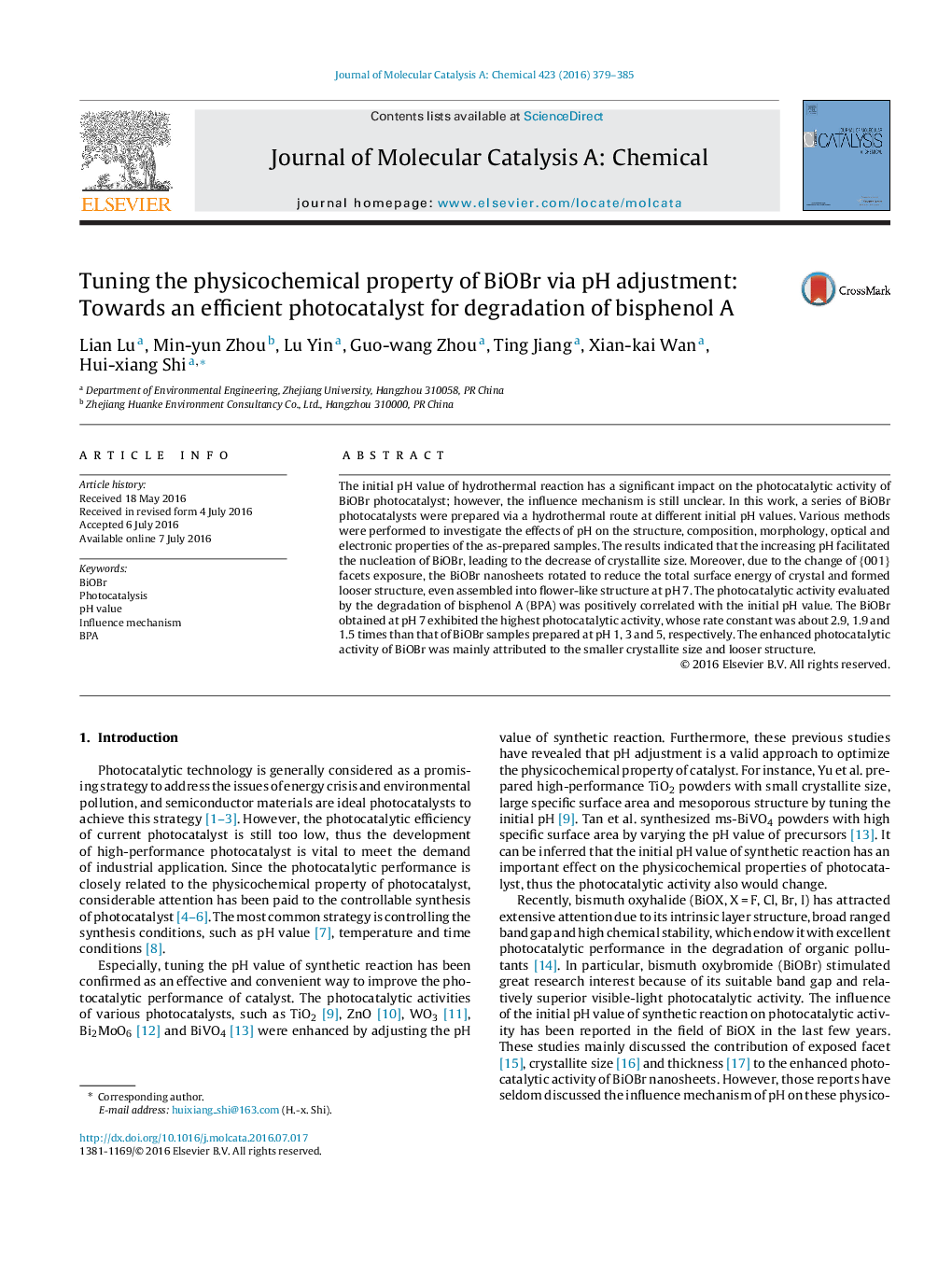| Article ID | Journal | Published Year | Pages | File Type |
|---|---|---|---|---|
| 64562 | Journal of Molecular Catalysis A: Chemical | 2016 | 7 Pages |
•Photocatalysis of BiOBr was optimized by raising the pH of hydrothermal reaction.•The increasing pH facilitated the nucleation of BiOBr to form smaller nanosheets.•As pH increased, nanosheets rotated to reduce the total surface energy of crystal.•The pH-driven morphological evolution was the major contributor to the activity.
The initial pH value of hydrothermal reaction has a significant impact on the photocatalytic activity of BiOBr photocatalyst; however, the influence mechanism is still unclear. In this work, a series of BiOBr photocatalysts were prepared via a hydrothermal route at different initial pH values. Various methods were performed to investigate the effects of pH on the structure, composition, morphology, optical and electronic properties of the as-prepared samples. The results indicated that the increasing pH facilitated the nucleation of BiOBr, leading to the decrease of crystallite size. Moreover, due to the change of {001} facets exposure, the BiOBr nanosheets rotated to reduce the total surface energy of crystal and formed looser structure, even assembled into flower-like structure at pH 7. The photocatalytic activity evaluated by the degradation of bisphenol A (BPA) was positively correlated with the initial pH value. The BiOBr obtained at pH 7 exhibited the highest photocatalytic activity, whose rate constant was about 2.9, 1.9 and 1.5 times than that of BiOBr samples prepared at pH 1, 3 and 5, respectively. The enhanced photocatalytic activity of BiOBr was mainly attributed to the smaller crystallite size and looser structure.
Graphical abstractFigure optionsDownload full-size imageDownload high-quality image (259 K)Download as PowerPoint slide
